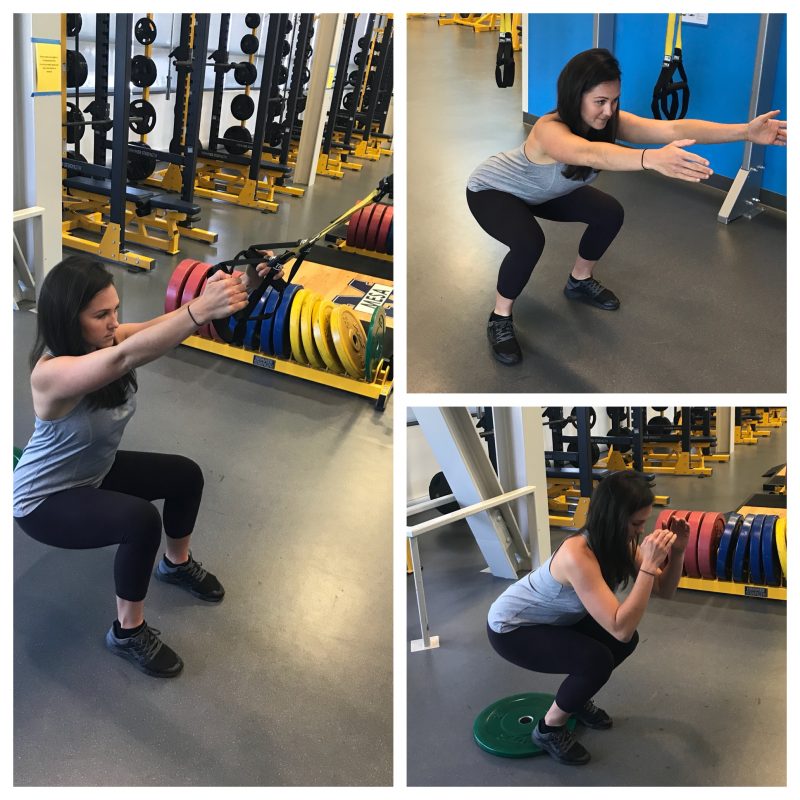Due to their functional, compound nature, squats are a standard movement in any workout program. It is, therefore, safe to say that most fitness professionals likely include some variation of this exercise in their sessions.
Squats are undoubtedly in the main workout routine because of their ability to increase muscular strength and endurance of the lower body. But, they are also a great warm-up movement because they prepare the major joint and muscle groups that will be called upon in the workout.
Proper Squat Form
The traditional squat is a multi-joint movement where flexion and extension of the hips, knees, and ankles (dorsi/plantar flexion) are executed in the sagittal plane.
In order for the squat to occur in the sagittal plane, feet are placed hip-width distance with toes pointing straightforward or turned out as much as 8°. The spine stays neutral, and the chest tall during the eccentric (lowering) and concentric (rising) phases.
This variation of the squat primarily targets the quadriceps but also recruits hamstrings, glutes, and the core.
Learn more about Proper Form for a Back Squat and Proper Squat Training.
What if clients turn their toes out beyond 8°?
It is important to determine the reason clients make this modification. Some may find that their range of motion (ROM) is reduced in a traditional stance due to structural limitations (Talocrural joint) or tight tissues (hip flexors, TFL, IT band).
Trainers such as Laura Pelosi and Beverly Hosford suggest having clients march in place or simply perform squats without directing them on foot placement. From there, they are able to observe natural mechanics up the chain of motion and identify any imbalances or compromised ROM.
Squat Regressions
If ROM is an issue, there are many options trainers can exercise (pun intended) to help reduce compensations that may occur due to limited hip flexion or ankle dorsiflexion. For the sake of this blog, we’ll look at 3 regressions suggested by some of my favorite trainers.
Suspension Strap Squats
One modification trainers Antonio Brito and Kelsey Graham make is to have clients squat using a suspension strap, which allows for greater ROM by reducing body weight load. Similar to a lunge modification I’ve previously discussed.
Squats in the Transverse Plane
Another suggestion is turning the toes out 10-30°. In doing so, the squatter creates external rotation of the hips, recruits the abductors, and moves into the transverse plane.
Squat with Elevated Heels
A third suggestion to assist in limited ankle ROM and/or valgus knee is to have clients squat with their heels elevated. Many trainers like Tim Sherlock place a small weight plate under clients’ heels to achieve this modification. This variation increases recruitment of the vastus medialis, and decreases compensations at the lumbar spine that can occur with limited dorsiflexion.
These three squat modifications are helpful in addressing limitations because they create ROM when clients don’t have it, YET.
Once clients have gained better ROM in their squat form, it is a sign that they are ready to start removing the straps, the weight plate and playing with toe placement to progress squats without compensations. Eventually, progressions such as barbell squats may later be introduced.
What modifications do you find helpful for clients to optimize their squat form?
[info type=”facebook”]Come share in the NFPT Facebook Community Group.[/info]




